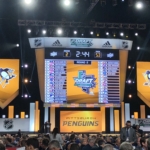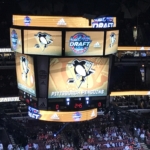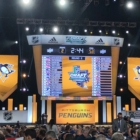The NHL saw something begin on Jan. 1 that it has not seen in its storied 100 year history — bye weeks for its member clubs.
Between Jan. 1 and April 9, all 30 clubs will send their players home, or wherever else they choose to go, for five days in what amounts to a mid-season blackout. There are no practices, team meetings or anything else over that period of time.
The NHL Players’ Association negotiated the bye weeks as part of the new All-Star Game format. The league wanted to continue the three-on-three All-Star tournament that began last season and the players wanted a chance to recharge during a busy schedule. The break was even more valuable during a year featuring the World Cup of Hockey.
The Penguins just completed their bye week and got back to game action on Sunday, knocking off the Tampa Bay Lightning 6-2 at PPG Paints Arena.
These midseason breaks were met with open arms by some, but others, such as Toronto Maple Leafs coach Mike Babcock, think that the week off could be problematic.
“I think it’s 100 percent wrong for player safety,” Babcock said during a meeting with the press on Saturday. “You’ve got so many games in such a short period of time and you’re jamming in more. To me, the more days rest you can have by not playing back-to-backs and jamming it in, the healthier you have a chance to be I believe.”
Penguins’ forward Conor Sheary, who picked up a goal and an assist on Sunday, said it was a bit tough in the early going against the Lightning, but that the break was beneficial.
“Maybe the first five minutes or so there’s a little bit of rust, but I think after that I felt pretty good,” Sheary said. “I think the rest is good for your body physically, so I think it probably helped us tonight.”
For the most part, the Penguins players and coaches seemed to agree with Sheary’s assessment. They were fine with taking the leave of absence. Many squeezed in brief vacations or trips to see family and friends, but were anxious to get back to playing games.
When they finally took the ice, it was as Sheary said: The rust was evident. It took more than 10 minutes before the team started to look comfortable. Coach Mike Sullivan explained Saturday how he worked hard to prepare his group before, during and after the bye week so that they’d be ready to return.
“All we can do is control what we can to put ourselves in the position to be successful, and that’s what we’ve tried to do,” he said. “We put a game plan together here for the last couple of days. We had a strategy going into this break to try to manage the players through the break, so we’re controlling everything within our power to give ourselves the best chance to be successful when that puck drops. For me, that’s all we can do.
“Now it’s all about a mindset. It’s about being ready to play and not easing into a game, but making sure we’re ready to play right from the drop of the puck.”
That’s the rub when taking a week off during the season. You can slip in terms of preparation and conditioning. It isn’t easy to get yourself back to where you were after a couple of days off, let alone a week. It also condenses the remaining schedule.
Some teams will have shorter breaks between games than others. For example, the Minnesota Wild will play 20 games in 35 days to finish out the season, which has their management considering resting players down the stretch. Playing so many games in close proximity could be a risk and lead to the injuries Babcock mentioned.
The Penguins have several tough stretches on their own schedule.
The first begins Wednesday when they head to Washington, the first of nine games in a 16-day stretch. They’ll play another 10 games in 19 days between Feb. 3 and Feb. 21. and 16 games in March.
Their toughest stretch probably comes between March 29 and their final game April 9. They’ll take the ice seven times over 12 days in that span, which is going to be grind.
It is going to be interesting to see how things play out once all teams complete their bye weeks. Will it cause injuries? Will rust be a factor in games coming out of the bye? It is all going to make for interesting debate moving forward. For now, the Penguins and those around the team seemed to have appreciated the break.
There ultimately may not be a right answer. Is it good? Is it bad? Can it help? Sidney Crosby summed it up best before the Penguins’ break a week ago, pointing out that the benefits for his team. It allowed time for some to get healthy and gave them a break after not having much of a summer.
“It’s never going to be a perfect time. It may work for some teams, it may not work for others. In the case for us, we’re a little banged up, so it’s probably not a bad time, so it’s worked out well as far as getting guys back to health. Guys can do what they want as far as how they approach it. Especially for us coming off a really long year last year, it’s probably a welcome five days.”







